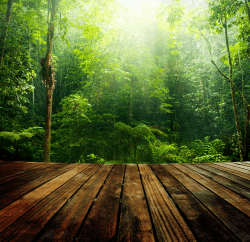 Up until the 1950s, houses in New Zealand were built from a range of native timbers. But by the late 1940s, native timber supplies were dwindling so the building industry turned to the exotic timbers that had been planted in large quantities in the 1920s. Two of the most successful species were pinus radiata and Douglas fir, which were both found to be versatile and have a wide range of building applications.
Up until the 1950s, houses in New Zealand were built from a range of native timbers. But by the late 1940s, native timber supplies were dwindling so the building industry turned to the exotic timbers that had been planted in large quantities in the 1920s. Two of the most successful species were pinus radiata and Douglas fir, which were both found to be versatile and have a wide range of building applications.
From1955 onwards, pinus radiata had all but replaced the use of native framing timbers in many parts of the country. One exception was Otago where native timber framing was commonly used until the early 1960s. Radiata pine was used untreated until 1954, when boric treatment of was introduced.
Interior finishing timber was still typically rimu through this period (used for framing, joinery and weatherboards, particularly south of Auckland).
By the 1960s, exotic species milled and available in New Zealand included Corsican pine, European larch, western red cedar and western yellow pine.
The table below sets out the range of timbers commonly used from the1940s through to the 1960s for state and private housing construction. It describes their characteristics and where the timbers were typically used and what timbers are prone to insect and fungal attack and would be suitable for our advanced timber treatment process.
Timbers used in 1940s/1950s/1960s houses
| Timber | Characteristics | Uses |
|---|---|---|
| Rimu (red pine) | Durable (except in wet conditions), fine texture, medium density softwood, Increased use of sapwood which was less durable and more prone to borer attack. Recommend treatment with Timbor. | General framing, weatherboards, flooring, interior finishing, doors and windows (dressing grade, treated sapwood) |
| Matai (black pine) | Moderate durability, above ground use only, prone to splitting | Flooring, sub-floor framing, weatherboards, exterior joinery, interior finishing |
| Douglas Fir (Oregon) | Moderately durable above ground (heartwood only), knotty timber. | General framing, exposed beams, rafters, interior finishing, window joinery, doors. NZ grown trees prone to borer attack. Recommend treatment with Timbor. |
| Baltic pine | Interior use | Flooring interior trim e.g. architraves, skirting boards. |
| Western red cedar | Low density softwood, straight grain, coarse texture, good dimensional stability, weathers to silver-grey colour, dry sapwood susceptible to borer attack. Recommend treatment with Timbor. | Exterior joinery, weatherboards, interior finishing, window opening sashes. |
| Redwood | Moderately durable above ground | Weatherboards, window opening sashes |
| Pinus radiata | Moderately durable above ground, requires treatment, prone to Borer attack. Recommend treatment with Timbor. | General framing (boric treated), doors and windows, interior finishing (finishing grade) |
| European larch | Moderately durable above ground, difficult to treat | General framing, interior finishing |
| Kauri | Moderately durable, prone to borer attack. Recommend treatment with Timbor. | General framing, flooring, sub-floor structures. |
